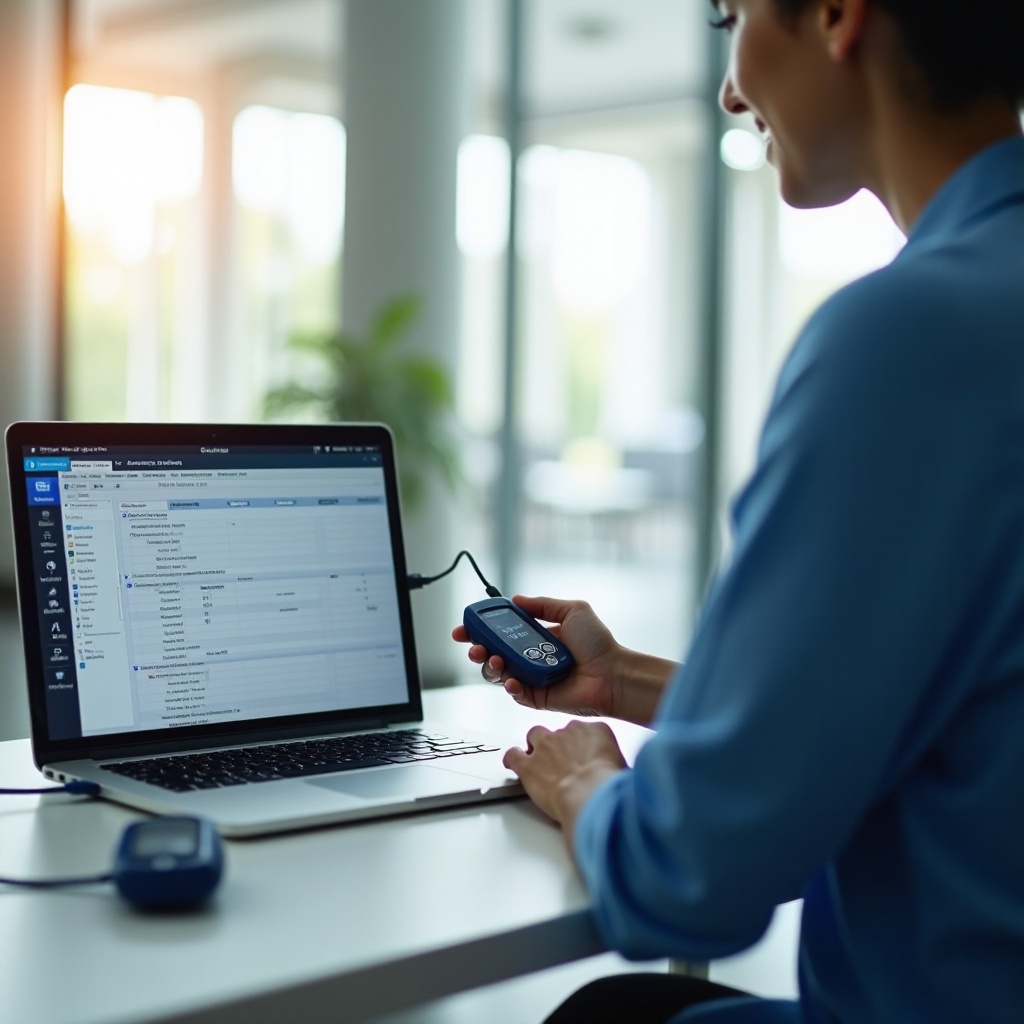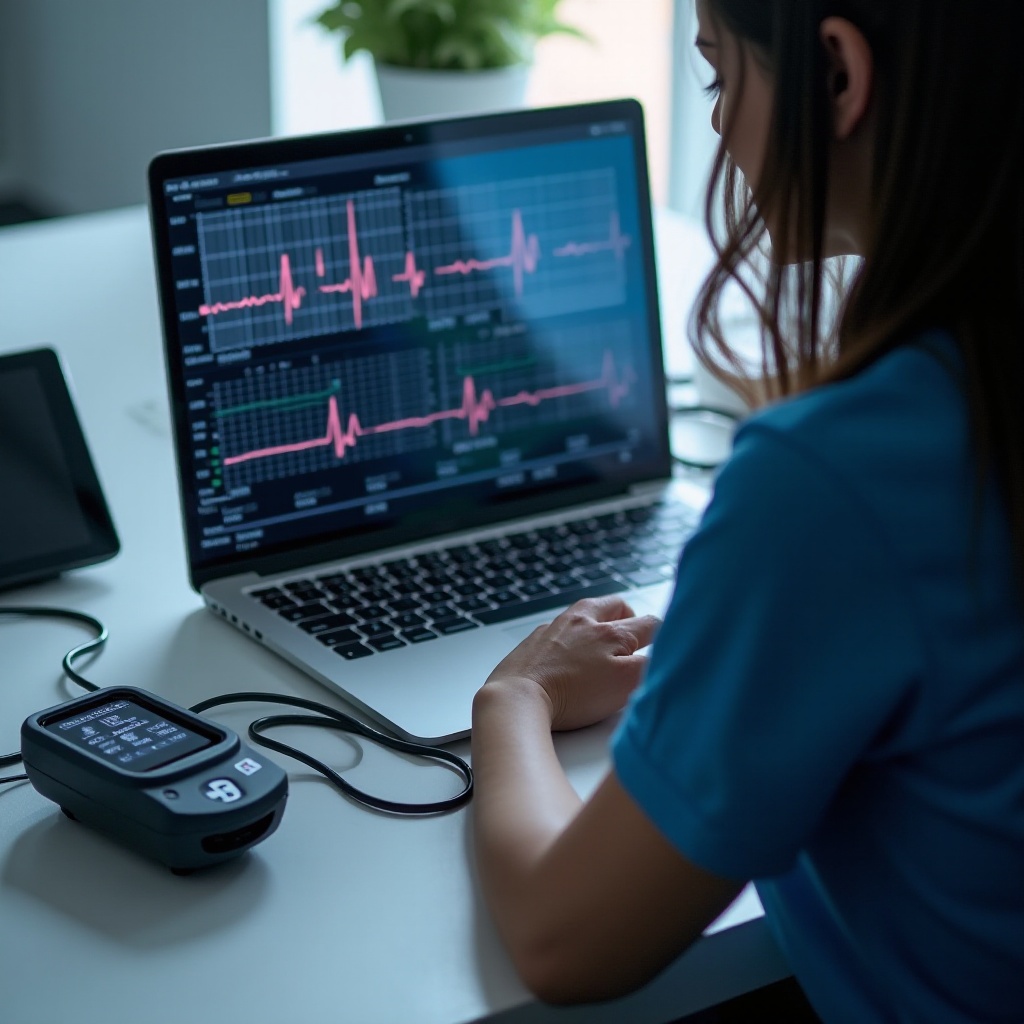
Introduction
Using a laptop to manage Holter monitor data combines medical technology with portable convenience. By integrating Holter monitor data with a laptop, medical professionals and patients can utilize powerful software tools to analyze heart activity and ensure data security. This guide will walk you through the process and benefits of integrating and analyzing Holter monitor data on your laptop.

Understanding Holter Monitors
Holter monitors are essential tools in cardiac care, providing continuous monitoring of heart activity over 24 to 48 hours.
What is a Holter Monitor?
A Holter monitor is a wearable device that records the heart’s electrical activity, typically for 24 to 48 hours. It captures detailed information about the heart’s rhythm, helping detect irregularities that may not be evident in a short clinic visit.
Key Components and Functionality
Key components of a Holter monitor include electrodes attached to the skin, a recording device that stores the data, and software to analyze the readings. The monitor ensures continuous documentation of heart activity, aiding in accurate diagnosis and treatment planning.
Benefits of Using a Laptop for Holter Monitor Data
Integrating a Holter monitor with a laptop provides several advantages that enhance the data analysis process.
Portability and Convenience
Laptops offer the portability necessary for medical professionals to analyze data from various locations, whether it’s a hospital, clinic, or home. This flexibility ensures timely interpretation of vital information.
Enhanced Data Analysis
Powerful software available on laptops can process and analyze large datasets efficiently. These tools generate detailed reports and visualizations, enabling precise diagnosis of cardiac issues.
Data Security and Backup
Laptops facilitate secure data storage solutions, such as encrypted hard drives and cloud backups. These measures protect sensitive patient information and ensure data is easily retrievable in case of hardware failure.

Setting Up Your Laptop for Holter Monitor Integration
Before diving into data analysis, proper setup of your laptop is crucial for smooth integration with your Holter monitor.
Necessary Software and Drivers
To begin, install any required software and drivers that accompany your Holter monitor. These tools are often provided by the manufacturer to ensure compatibility and functionality.
Connectivity Options (USB, Bluetooth, etc.)
Determine the connectivity options available for your Holter monitor. Many devices connect via USB or Bluetooth. Ensure your laptop supports the chosen connection method.
Initial Setup and Configuration
After installing the necessary software, follow the manufacturer’s instructions to configure the connection. This setup usually involves syncing the Holter monitor with your laptop for the first time and ensuring data transfer protocols are established.
Step-by-Step Guide to Integrating Holter Monitor Data
Once your laptop is set up, transferring and managing data from the Holter monitor is straightforward.
Transferring Data from Holter Monitor
- Connect the Holter monitor to your laptop using the chosen connectivity option.
- Open the monitoring software to initiate the data transfer.
- Follow on-screen instructions to download the data from the monitor to your laptop.
Using the Software Interface
- Launch the monitoring software on your laptop.
- Navigate through the software interface to access the imported data.
- Use built-in tools to start analyzing the data, such as viewing ECG strips or generating summary reports.
Data Verification and Storage
After transferring the data, verify its completeness and accuracy. Store the data securely on your laptop, utilizing encryption and backup solutions to safeguard against data loss.
Analyzing Holter Monitor Data on Your Laptop
Effective analysis of Holter monitor data involves understanding the software interface and interpreting the results correctly.
Accessing and Viewing Data
Using the monitoring software, access the recorded data. The interface typically presents data in a timeline format, showing heart activity over the monitored period.
Understanding Graphs and Metrics
Carefully review the graphs and metrics provided. Common data includes heart rate variability, arrhythmias, and periods of high or low activity. Understand these metrics to interpret potential issues.
Exporting and Sharing Data
To share findings with other healthcare providers or patients, use the software’s export functions. Generate detailed reports in common formats like PDF or CSV for easy distribution.

Troubleshooting Common Issues
Encountering problems during integration and analysis is not uncommon. Here’s how to handle typical issues:
Connectivity Problems
If the Holter monitor doesn’t connect to your laptop, check all physical connections and ensure Bluetooth is enabled if applicable. Reinstalling drivers may also resolve connectivity issues.
Data Transfer Errors
Failed data transfers may be resolved by verifying the device compatibility and ensuring sufficient storage space on your laptop. Restarting both devices can sometimes help.
Software Crashes and Freezes
If the software crashes or freezes, check for software updates or patches. Ensure your laptop meets the system requirements for the software, and consider reinstalling if problems persist.
Best Practices for Maintaining Data Integrity
Maintaining data integrity is crucial for accurate cardiac analysis.
Regular Software Updates
Keep your monitoring software updated to the latest version. Updates often fix bugs, improve functionality, and enhance security.
Data Backup Solutions
Regularly back up Holter monitor data to an external drive or cloud storage. This practice ensures you have access to the data even in case of hardware failure.
Conclusion
Integrating and analyzing Holter monitor data on a laptop is an efficient and secure method for managing heart health information. By following these steps and best practices, healthcare providers and patients can ensure accurate, accessible, and reliable cardiac analysis.
Frequently Asked Questions
What are the most reliable laptops for Holter monitor data analysis?
Reliable options include laptops with robust processing power, high storage capacity, and excellent security features. Brands like Dell, HP, and MacBook are often recommended.
How can I ensure the accuracy of my Holter monitor data on a laptop?
Verify the data transfer process, regularly update your monitoring software, and back up your data. Ensuring a secure and stable connection during data transfer helps maintain accuracy.
What should I do if my laptop fails to connect with the Holter monitor?
Firstly, check physical connections and compatibility. If issues persist, reinstall the device drivers and ensure all software is up-to-date. Restart both devices to resolve any temporary issues.
